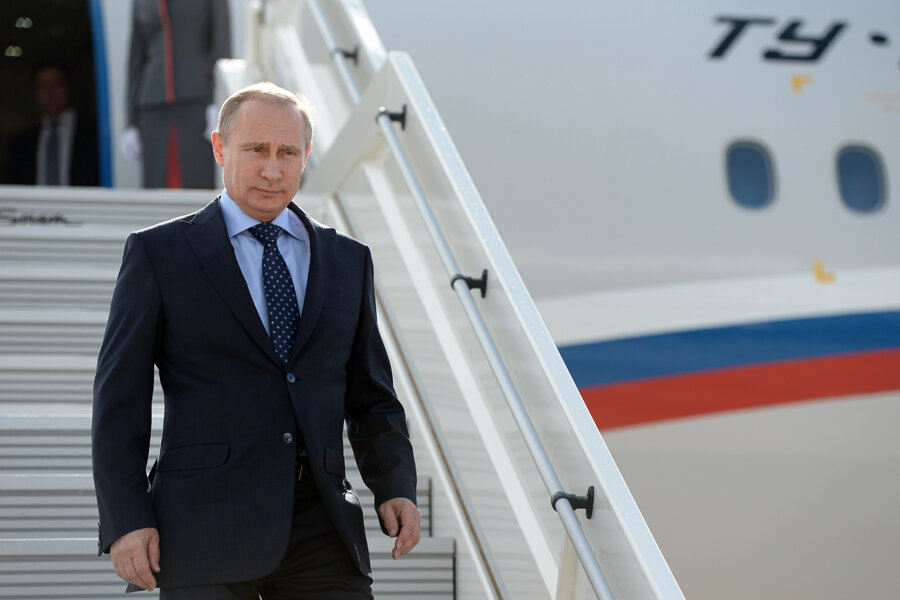What really happened to MH17? Russia's media have the answer
In the days since Malaysia Airlines flight MH17 was shot down over eastern Ukraine, Russian state-owned media outlets have produced alternative explanations for what happened. While the Western world blames Russian-backed rebels in Ukraine, Russian media, including private outlets, have explored other possibilities – from the totally outrageous to the outwardly plausible. In all their scenarios, the Ukrainian government is responsible.
With a compromised crash site and inebriated rebels, Russia's media has seized on the unknowns and amplified the confusion. Here is a look at five popular explanations and why they don’t add up.
1. MH17 was full of dead bodies before it was shot down. In what might be the most outrageous conspiracy theory, rebel commander Igor Girkin claimed that bodies found at the crash sight appeared to have been dead for days. This claim was easily debunked: Family members confirmed dropping off passengers before the flight, and social media postings had a matching timeline.
2. The mysterious Spanish airport controller source. A mysterious Twitter account, @spainbuca, purporting to be a Spanish air traffic controller at Kiev's international airport named Carlos tweeted out that two Ukrainian fighter jets had shadowed the Malaysian airliner and that Kiev was behind its downing. In May, the Spanish-language channel of Kremlin mouthpiece RT interviewed Carlos and blurred out his face because he claimed he was in danger for criticizing the Ukrainian government.
However, the Spanish Embassy in Kiev has no record of Carlos, reports Fox News Latino. “We have no knowledge of ‘Carlos’ having been in Ukraine. There is no record of his passing through the Consulate, and no one from the (relatively small) Spanish colony knows him,” it said. Carlos’s Twitter account no longer exists.
3. Ukraine was trying to assassinate president Vladimir Putin. Mr. Putin flew back to Russia from Brazil on the same day and passed through Ukrainian airspace. As the Associated Press reported, Russian anchor Yekaterina Andreyeva explained the theory that the downing of MH17 was really an assassination attempt gone awry by Ukraine's government. Russian media struggled to get this rumor straight; RT had contradictory reports, with one source saying Putin didn't fly over the conflict area.
4. The rebels didn’t have a Buk missile launcher. This is a key element in the Russian counter-narrative: Rebels didn't have access to the Buk missile launcher that allegedly brought down MH17; the Ukrainian military did. Therefore, the likely suspect is Ukraine.
Nonetheless, an AP reporter had earlier seen a Buk launcher in rebel-held territory. This theory is also undermined by the rebel leaders' own response. Soon after the plane came down, they bragged on social media about shooting down Ukrainian military planes. Russian state media even repeated this claim, citing eyewitnesses near the crash site. As the Monitor reported early on, social media accounts of rebel leaders were later scrubbed.
5. A Ukrainian SU-25 plane was near MN17 before it went down. One of the newest theories cites Russian air traffic data to suggest that a Ukrainian Su-25 fighter plane was “tracking” MH17 before it went down. “The presence of the Ukrainian military jet can be confirmed by video shots made by the Rostov monitoring center,” RT reports.
An aviation expert told RFE/RL that it would be highly unlikely an Su-25 could have maneuvered to shoot down MH17. “Loaded with missiles and bombs, [the Su-25's] maximum altitude is five kilometers. We know that MH17 was flying at 10 kilometers high.”







